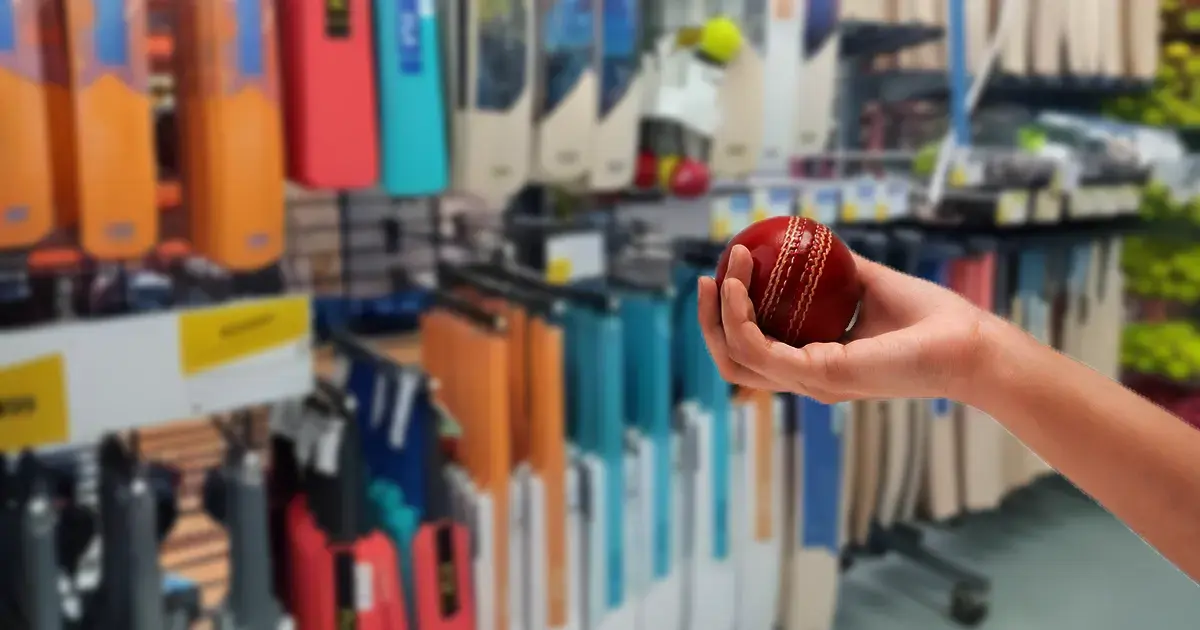In the world of cricket, choosing the right ball is essential, and that’s why we present to you the ultimate resource, the best cricket ball buying guide.
Finding the perfect cricket ball that fits your playing style, pitch conditions, and budget can be challenging in the vast cricket ball market.
But don’t worry; our detailed buying guide is here to make this process easier for you.
We are aware of the passion cricket inspires in its players and share that same passion in our desire to help you make an informed choice.
Let’s explore the key factors, tips, and recommendations that will ensure you get the best cricket ball for your game.

How to Choose a Cricket Ball?
Choosing the right cricket ball is crucial for a successful game. Cricket balls come in various types and qualities, and selecting the one that suits your needs and conditions is essential.
Here are some key factors to consider when choosing a cricket ball:
- Ball Type
a. Red Ball: Red cricket balls are traditionally used in longer game formats, such as Test matches and first-class cricket. They are typically made of leather and are designed to swing and seam as the game progresses. Red balls are also used in some shorter formats, like T20 cricket.
b. White Ball: White cricket balls are mainly used in limited-overs formats (ODIs and T20s). They are made of leather and are dyed white to provide better visibility under artificial lighting.
c. Pink Ball: Pink cricket balls are used for day-night Test matches. They are made of leather but are designed to offer improved visibility under both natural and artificial lighting conditions.
- Quality
Cricket balls are available in various qualities, often classified as “Grade A,” “Grade B,” or “Grade C.” The higher the grade, the better the quality of the ball.
Grade A balls are typically preferred for professional and serious club matches, while Grade B and C balls are suitable for practice and recreational games.
- Brand & Manufacturer
Recognized and reputable brands, such as Kookaburra, Dukes, and SG, are known for producing high-quality cricket balls. Choose a ball from a well-known manufacturer to ensure its quality and consistency.
- Surface & Seam
Check the ball’s surface for any visible cracks, scratches, or damage. A smooth and unblemished surface is essential for a good grip and swing.
The seam should be well-defined and centrally placed. A well-maintained seam helps bowlers achieve movement in the air and off the pitch.
- Cricket Ball Size & Weight
Cricket balls come in various weights and sizes to suit different levels of play and age groups. Ensure you select a ball that adheres to the regulations of your specific format and age group.
The standard t20 cricket ball weighs approximately 155.9 to 163 grams.
- Climate & Pitch Conditions
Consider the weather conditions and the type of pitch you’ll be playing on. The ball may deteriorate faster in hot and dry conditions, while on green, seaming pitches, you might want a ball that swings more.
- Budget
Cricket balls come in a range of prices, so consider your budget. While high-quality balls are essential for professional games, you can opt for more affordable options for practice and casual games.
- Personal Preference
Your personal preferences and playing style also play a role in choosing a cricket ball. Bowlers may prefer a ball that swings or seams more, while batters may pick a ball that retains its shine for longer.
Whether you’re playing under the lights with a pink ball or during the day with a traditional red ball, understanding the specifications, especially in terms of international cricket ball weight, allows players to make informed decisions, optimizing their performance on the field.

2 Piece Vs 4 Piece Cricket Balls
2-piece and 4-piece cricket balls are both used in the sport of cricket, and they have some critical differences in their construction, performance, and the situations in which they are typically used.
- 2 Piece Cricket Ball
Construction: 2-piece cricket balls are traditionally made of two semi-spherical halves stitched together. These halves are typically composed of cork or rubber at the core, with several layers of twine wound around them. A leather cover is then stitched over the twine, resulting in a 2-piece cricket ball.
Durability: 2-piece cricket balls tend to be less durable than 4-piece balls. The seam between the two halves can be susceptible to wear and tear, leading to more frequent replacements during a cricket match.
Swing & Seam Movement: Due to the prominent seam, 2-piece balls can exhibit significant swing and seam movement in the air and off the pitch. This makes them preferred for bowlers who rely on these skills to outfox batters.
Traditional Feel: Many cricketers and purists favour 2-piece balls for their traditional feel and ability to reverse swing. These balls have been used for centuries and are considered a sport’s hallmark.
- 4 Piece Cricket Ball
Construction: 4-piece cricket balls are more modern in their construction. They consist of a solid, cork or rubber core wrapped in multiple layers of tightly wound twine, then enclosed in a leather cover. This results in a seamless and more symmetrical ball.
Durability: 4-piece balls are generally more durable than their 2-piece counterparts. The lack of a seam means they maintain their shape and consistency for longer, reducing the need for frequent replacements.
Less Swing & Seam: 4-piece cricket balls produce less swing and seam movement than 2-piece balls. Bowlers who use reverse swing and seam as primary weapons may not find them as effective.
Consistency: The uniform construction of 4-piece balls means that they offer more consistent bounce and pace, which batters often favour.
Limited Deterioration: The lack of a seam on a 4-piece ball means it is less prone to wear and tear, and the leather cover remains in better condition for longer. This can make them more predictable and suitable for longer game formats, like Test cricket.
The choice between a 2-piece and a 4-piece cricket ball often depends on the format of the game, the playing conditions, and the players’ preferences.
Grab The Best Cricket Ball With Yashi Sports!
Are you a passionate cricketer looking for that perfect cricket ball to take your game to the next level?
Look no further!
Yashi Sports presents the best cricket balls you’ve been searching for.
Our cricket balls are made with the best materials to ensure they withstand even the most powerful hits.
Yashi Sports cricket balls are designed to deliver excellent bounce, seam movement, and durability, giving you the competitive edge you need on the field.
Don’t compromise on your game, and visit our website to explore our full range of cricket equipment and accessories.
Takeaway
In conclusion, the best cricket ball buying guide is your compass in the vast sea of cricket ball options, helping you navigate the complexities and choose the perfect ball to enhance your game.
With its valuable insights on ball types, materials, quality, and performance considerations, it helps you to make a well-informed choice that can significantly impact your cricketing experience.
So, arm yourself with knowledge and confidently take the pitch, knowing that you’ve made the right choice for your game.
Choose a cricket ball based on your skill level and the format of the game. Red leather balls are typically used for longer formats, while white balls are used in limited-overs cricket.
A good cricket ball should consistently have a smooth, unblemished surface, proper weight, and bounce. It should also maintain its shape and hardness for an extended period.
The choice between a 2 piece and 4 piece leather ball depends on the level of play. 4-piece balls are more durable and suitable for professional matches, while 2-piece balls are often used for recreational or practice games.
The grade of a cricket ball refers to its quality. Higher-grade balls are made from better-quality materials and are used in professional cricket, while lower-grade balls are more suitable for amateur and practice games.







